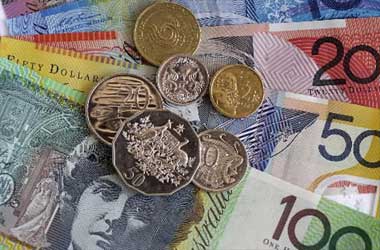 The Australian dollar declined against the dollar, the pound, and other major currencies as the price of iron ore with a 63.5% iron content for delivery to Tianjin tumbled to near $200 a ton, the lowest since the last week of May, due to increased supply and directives to trim output by some Chinese steel producers.
The Australian dollar declined against the dollar, the pound, and other major currencies as the price of iron ore with a 63.5% iron content for delivery to Tianjin tumbled to near $200 a ton, the lowest since the last week of May, due to increased supply and directives to trim output by some Chinese steel producers.
The resurgence of Covid-19 (delta variant) infections is also casting question on whether bond buying program will be reduced in September. Iron ore imports to China increased for the third week, bringing dockside stockpiles to 127.34 million tonnes at the end of July 18th.
Steel manufacturers in the provinces of Anhui, Gansu, Fujian, Jiangsu, Jiangxi, Shandong, and Yunnan have been instructed to curtail output to 2020 levels as part of China’s attempts to reduce greenhouse gases. To keep costs in check, China is planning to slap export taxes on steel spanning from 10% to 25%.
The Australian Dollar is expected to finish July as the second-worst performing currency in the G10, weighed down by forecasts that a series of shutdowns to limit Covid-19 will culminate into a third-quarter economic decline.
Economists currently expect the Reserve Bank of Australia (RBA) to scoff at the notion of lowering its quantitative easing program in September, preferring to keep stimulus at current levels for extended period of time. With the exception of the Norwegian Krone, the Australian Dollar is now adapting to this scenario, with declines versus the bulk of its main rivals. The RBA policy meeting on August 06, where the reaction to latest lockdowns will be established, will beckon as a short-term mover of the Australian Dollar.
At its July policy review, the RBA stated that it aims to commence tapering bond buying under its quantitative easing initiative in September, a move that the market saw as a positive factor for the Australian Dollar. However, this occurred at a period of tremendous economic development and a bright future, thanks to the country’s covid-free scenario. The subsequent lockdowns, as well as projections for economic contraction in the third quarter, have erased these assumptions, leaving Governor Philip Lowe and his staff with some policy ambiguity.
Currencies tend depreciate in the midst of such uncertainty, and the Australian Dollar’s present poor performance demonstrates this basic link. Lockdowns in New South Wales (NSW) are projected to cost A$750 million each week, according to the Australian Treasury, with the lockdown currently anticipated to last until September.
Westpac economists have produced projections that suggest the national economy would decline by 0.7% in the third quarter, costing about A$8 billion. Westpac predicts a 3.1% contraction in NSW GDP in the third quarter.
The country’s economy will decline by 0.7% in the third quarter of 2021, according to St. George Bank, assuming the present lockdown in NSW doesn’t really extend much more than eight weeks and Victoria’s lockdown is likewise brief.
Beginning September, the RBA will lower its quantitative easing program from A$5 billion to A$4 billion per week, however Governor Philip Lowe has emphasized that the RBA remains responsive on the subject and that purchases may be increased if necessary.
Australia’s inflation rate increased to 3.8% in Q2 2021, up from 1.1% in Q1 and in line with market expectations. This was the strongest level since Q3 2008, indicating some baseline impacts from free child care and a historic drop in gasoline costs in Q2 2020.
Significantly, recent economic data has been dismal. According to a preliminary assessment, the IHS Markit Australia Services PMI fell to 44.2 in July from an amended 56.8 the earlier month. The data indicated a drop in the services sector following ten months of expansion, owing to new limitations imposed as coronavirus infections resurfaced in some regions of the nation.
Mobility limitations impacted market demands, resulting in a drop in total economic activity. In terms of pricing, both input and output inflation rates have subsided. Interim statistics revealed that retail sales in Australia fell by 1.8% m-o-m in July 2021, contrary to market forecasts of a 0.4% drop but after a confirmed 0.4% rise a month ago. Mainly as a result of coronavirus prohibitions throughout many jurisdictions, notably Victoria and New South Wales, retail commerce fell for the first time since February.
The biggest drops were in cafes, restaurants, and takeout food services, as well as apparel, footwear, and personal accessory shopping. The gravity of the RBA’s response to the epidemic, as well as economic events, will undoubtedly shape the Australian Dollar’s direction in the following weeks.



